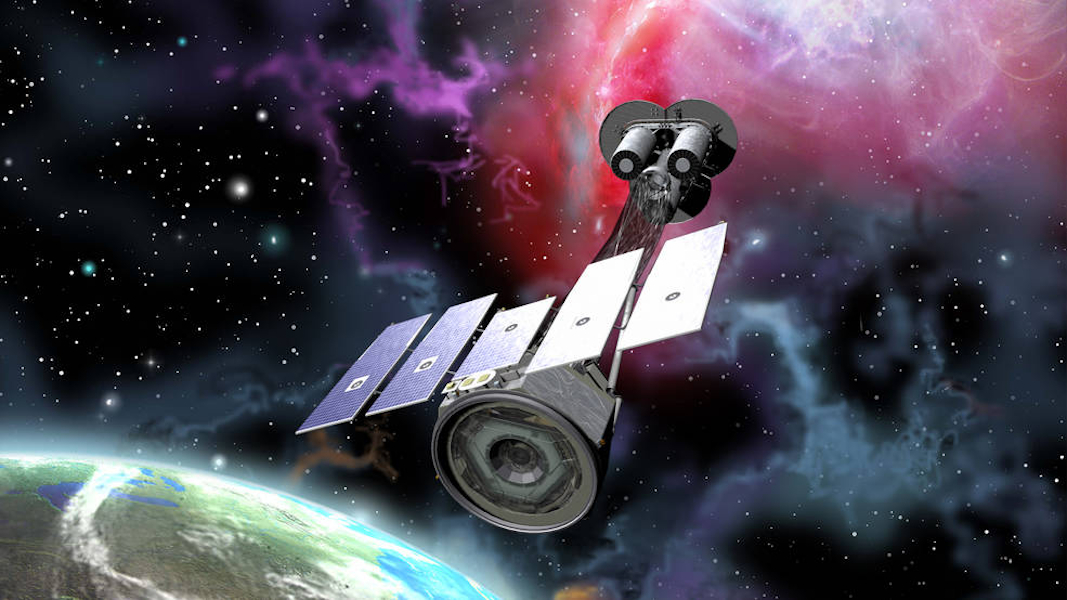
 Credit: NASA
Credit: NASA
The Shape of Things: To Come
On December 9, 2021, at 1am EST NASA successfully launched the Imaging X-ray Polarimetry Explorer, otherwise known as IXPE. IXPE is the first sensitive space-based experiment dedicated to measuring not only the X-ray brightness of cosmic objects (neutron stars, black holes, supernovae. and others) but also the polarization of their X-ray emission as well. X-rays, like all forms of radiation, are electromagnetic waves that move through space at the speed of light. Like the waves on a beach, electromagnetic waves move in a plane with a particular orientation. The amount of polarization of these waves allows astronomers to deduce the geometry of the emitting object, just like the orientation of ocean waves can tell you the orientation of the beach to your line of sight. Measuring the degree of X-ray polarization helps constrain the shape of X-ray emitting objects which are too far away to resolve directly. For example, polarization measurements can help determine whether an X-ray source is a flat disk at some particular orientation, or more extended object. IXPE can also determine how this shape might vary in time and with X-ray energy as well. The image above is an artistic representation of IXPE observing the cosmos; IXPE's three X-ray telescopes are towards the top of the illustration, and IXPE's instrument package, along with the solar panels that power IXPE, towards the bottom. IXPE is a collaboration led by the NASA/Marshall Space Flight Center and the Italian Space Agency, along with other partners from industry and the academic community. IXPE is currently in its in-orbit checkout phase, and will soon begin its prime science mission, expected to last two years.
Published: December 13, 2021
<
HEA Dictionary ● Archive
● Search HEAPOW
● Other Languages
● HEAPOW on Facebook
● Download all Images
● Education ● HEAD
>

Each week the HEASARC
brings you new, exciting and beautiful images from X-ray and Gamma ray
astronomy. Check back each week and be sure to check out the HEAPOW archive!
Page Author: Dr. Michael F. Corcoran
Last modified Tuesday, 27-Feb-2024 10:13:27 EST


